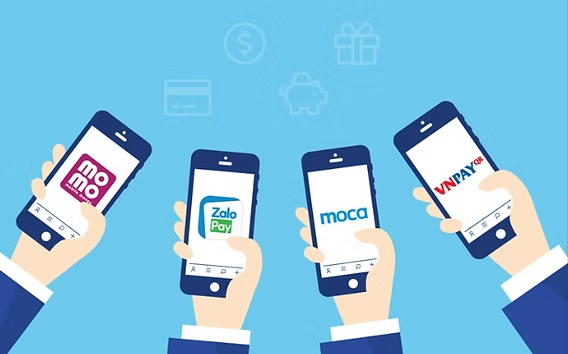Vietnam, as an economy, is rapidly shifting to a cashless ecosystem. With digital payments expanding across urban as well as rural areas, both businesses and individuals in Vietnam are moving towards digital first adoption. For businesses (catering locally and internationally) seeking to accept payments in Vietnam, it’s essential to understand the local payment landscape which comprises bank transfers, e-wallets and VietQR payments. These methods not only form the backbone of the digital payment ecosystem but also offer strong alternatives to traditional card based systems. In this article, we shall walk through the process of receiving payments, outline integration steps and understand the features and roundabouts of the mediums available, let’s get started!
Understanding payment methods in Vietnam
Vietnam’s fast growing digital payment network is led by bank transfers, e-wallets and VietQR. Each plays a distinct role in enabling cashless payments and financial inclusion in the country.
- Bank transfers
- Bank transfers are the most widely used and trusted method for B2B transfers and large transactions.
- They are supported by NAPAS which helps enable real time bank transfers.
- They are ideal for suppliers, corporate settlements and invoices.
- They cost less and are relatively reliable but may require manual intervention for high volume retail usage.
- E-wallets
- E-wallets are rapidly expanding among consumers mainly through apps like MoMo, ZaloPay, ViettelPay, and VNPay.
- They are popular for e-commerce, food deliveries and a plethora of app based services.
- They offer instant payments, cashbacks and loyalty rewards.
- They are perfect for mobile first usage. Although fragmented at present, merchants often use them as integrations with other wallets.
- VietQR
- It is the National QR standard payment system developed by NAPAS and the State bank of Vietnam.
- It allows users to scan a QR code from any bank or wallet app for instant payments.
- It enables benefits like real-time settlement and low transfer fees.
- It is best suited for SMEs, offline stores, quick digital transactions and utility payments.
Now that we’ve understood what each payment method in the country stands for, let’s find out how they work and how to integrate the same into your system.
How to accept bank transfers in Vietnam
To accept bank transfers in Vietnam, take the following steps;
- Provide your bank account to your customer.
- The customer logs into their online banking portal or mobile app - enters the provided bank details and initiates a transfer.
- The funds move via interbank clearing system, most often through Vietnam’s national clearing networks.
- Once the transfer is confirmed, your system reconciles the payment (manually or via APIs) and the initiated order is settled.
Popular use cases of bank transfers include B2B payments, high value one time payments and cross border inflows.
For integration, follow the steps;
- Open a business bank account in Vietnam (for local VND transfers)
- Use a payment gateway or aggregator that supports local bank API integration or local settlement.
- Provide clear and detailed instructions to your customers.
- Automate settlements through poll bank APIs or webhook to match incoming payments with initiated orders.
E-wallet payments in Vietnam
Vietnam has a constantly evolving and competitive e-wallet ecosystem. Some leading wallets include MoMo, ZaloPay, VNPay, ViettelPay and more. For using e-wallets;
- The user needs to install the e-wallet app and link their bank account or other top up methods.
- At the point of checking out (in web or mobile), the customer selects their wallet as a payment option.
- The wallet provider then pushes the payment to the business’s merchant account or through a payment gateway.
Important use cases include retail purchases, e-commerce checkouts, small and frequent transactions, subscription based or recurring payments.
For easy integration with your business, follow the steps;
- Partner with payment gateways/local providers that integrate wallets (for eg. PayLater, TransFi, VNPAY and other local providers)
- Offer more wallet options to cater to a wider customer base.
- Ensure seamless user experience - redirect to a wallet app or integrate in-app smooth flow.
- Handle fallbacks by allowing alternate bank transfers or other methods.
- Be aware of the wallet’s fee structure, settlement timelines and revenue sharing model.
Accepting VietQR payments in Vietnam
VietQR is Vietnam’s national QR code payment system built on open APIs and integrated with banks and fintechs.
How does VietQR work?
- The merchant obtains a VietQR merchant ID by registering a bank or QR service provider.
- Via its API or portal, the merchant generates a QR code associated with a transaction.
- The customer scans the QR using their bank app or wallet that supports VietQR (it is widely supported and accepted)
- The customer confirms the amount and permits payment.
- NAPAS (underlying infrastructure of VietQR) routes the payment to the merchant's bank account - often occurring in real time settlement.
VietQR comes with APIs supporting features like refunds reconciliation, QR generation, and status polling. Its use cases include physical stores, point of sale payments, QR facilitated check outs on mobile apps, small retail payments, vending machines and utility payments using QR. It holds a significant day to day usability.
To integrate VietQR;
- Register with a VietQR service provider or a partner bank.
- Use VietQR API to generate personalized QR code and handle callbacks,
- Utilize QR code in checkout, invoicing, POS devices or display screens.
- Monitor transactions with backend integrations.
- Enable refund handling and processing.
- Accentuate user experience by dealing with QR fallbacks.
VietQR stands as a flexible and trustworthy payment system for businesses in Vietnam. From handling a multitude of payment types to its integration possibilities, VietQR is the go-to solution for many businesses and services.
What’s next?
Vietnam’s digital payment landscape is evolving into one of the most advanced ones in Southeast Asia and is vividly competing with neighbouring nations. It is powered by bank transfers, e-wallet payments and VietQR. Each method offers a distinct category or advantages spanning from reliability on interbank networks to speed and convenience of mobile wallets and interconnected networks of VietQR ecosystem. For businesses, adopting a multi channeled payment strategy can be very beneficial in ensuring flexibility, faster payments and better customer experience. Startups and SMEs can especially benefit by leveraging instant, low cost and secure digital payments at entry point solutions for their financial needs. If your business needs to cultivate a model like that, TransFi’s BizPay can help with all-in-one payment solutions to simplify bank transfers, e-wallets and VietQR integrations.
Also read: Payment delays in Hospitality: Hidden costs & how to fix them
Frequently asked questions (FAQs)
- Do customers need multiple wallet apps to make payments?
Not really. With VietQR, customers can use any bank apps or payment providers which support the QR standard. But for wallet to wallet payments, specific wallets are required.
- How fast is settlement for VietQR payments?
These settlements are realtime or near instant. VietQR facilitates faster, low cost payments with smooth experience.
- What’s the fastest way to start accepting payments in Vietnam?
To facilitate fastest payments, use payment gateways like TransFi which bundle bank transfers, e-wallets and QR standard payment in one place - this reduces setup time and real time settlements in most cases.
- Do all Vietnamese banks and wallets support VietQR?
Many banks do, while adoption is still evolving, integration is expanding across banks and fintechs.
- Which e-wallet is most popular in Vietnam?
MoMo is a leading e-wallet, with millions of users. Other popular wallets include ZaloPay, ViettelPay, VNPay.
目次
推奨記事







.jpeg)



.png)














